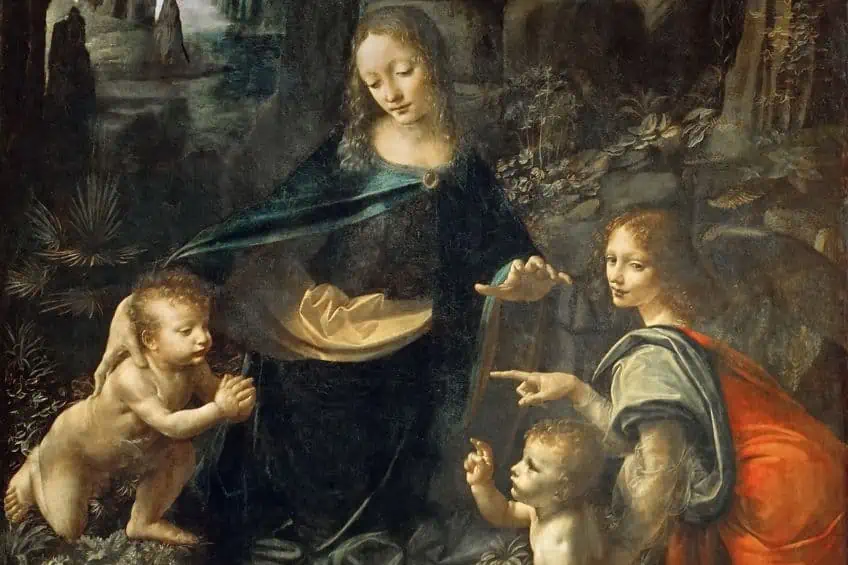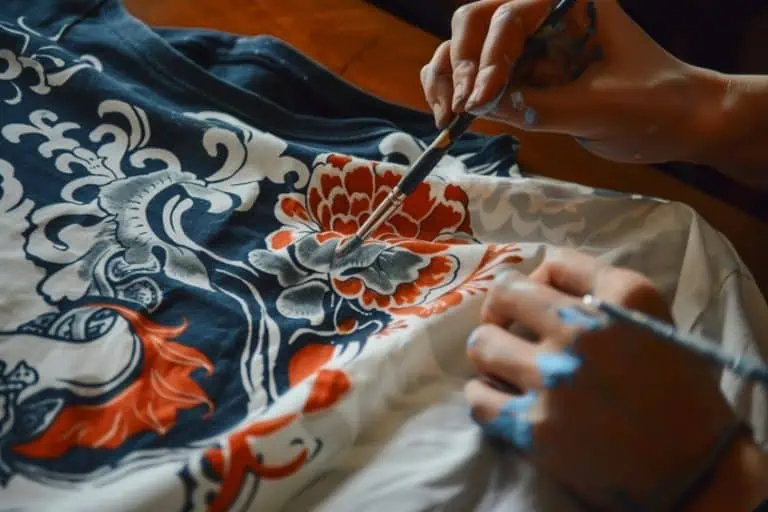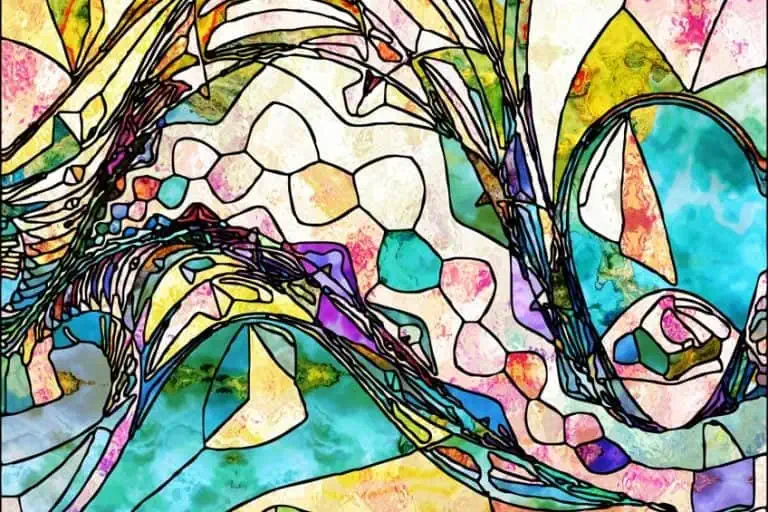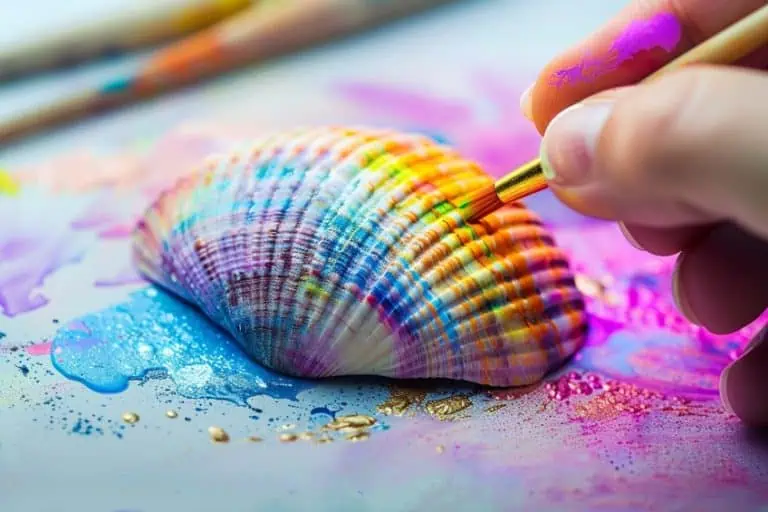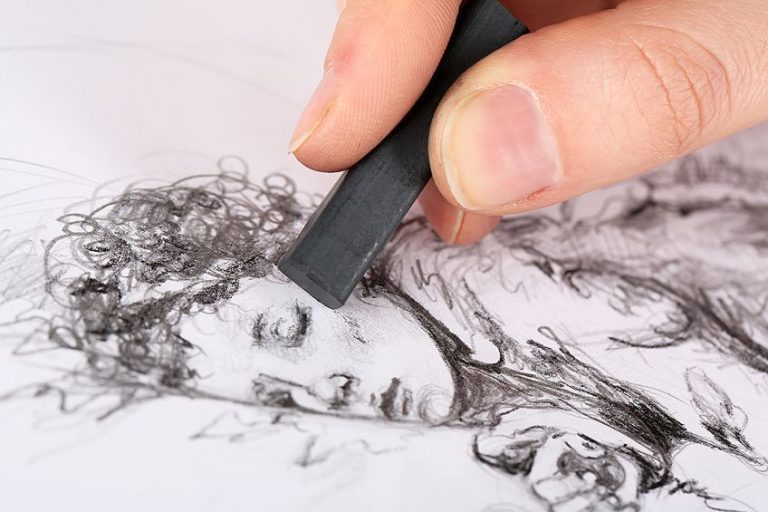Sfumato – Explore Everything About the Sfumato Technique
This post may contain affiliate links. We may earn a small commission from purchases made through them, at no additional cost to you.
When it comes to art, you have many different techniques that artists use to create exceptional pieces of art. The sfumato technique is one of these where the artist paints numerous thin coats of glaze, which helps to gently change the tone and brings about a shift between light and dark shadows. Allow us to now explain more about sfumato and how it was developed.
Table of Contents
What Is Sfumato?
During the Renaissance era, rich and exuberant styles of art were developed. This was accomplished by the artists using different techniques, one such being chiaroscuro, which was a combination of two Italian words chiaro, which means “clear or light”, and scuro, which means “obscure or dark”. In this technique, the artist used gradations of shadow and light to create a three-dimensional scene, where the objects and figures gave the impression of a solid form.
Leonardo da Vinci mastered this art technique, which led the way to the development of the art of the sfumato technique.
This raises the question, what is the sfumato definition? The word sfumato is derived from the Italian word fumo, which means “fume or smoke” and translated into English means “blurred, soft, or vague”. This is accomplished by carefully blending and blurring the outlines, giving the painting a smokey effect.
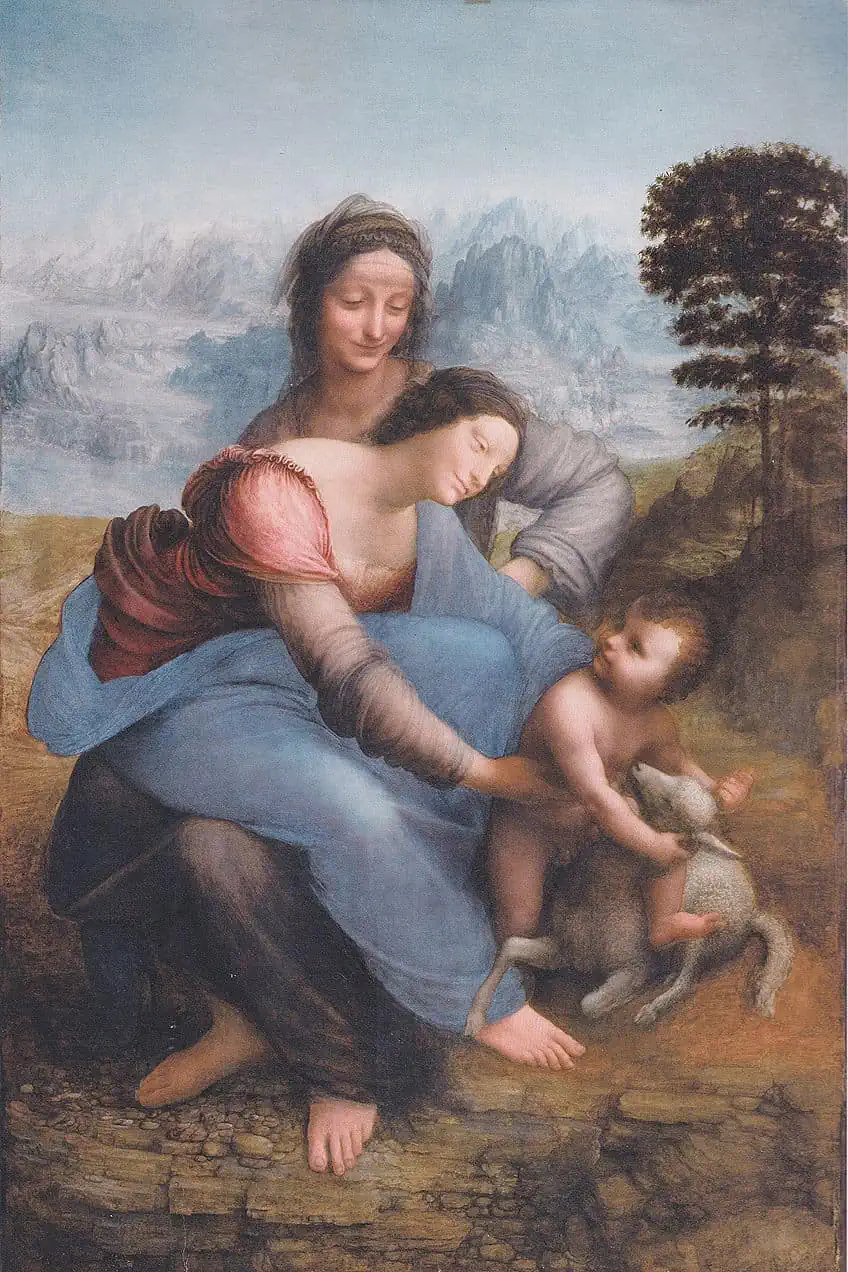 Virgin and Child with Saint Anne (c. 1510) by Leonardo da Vinci; Leonardo da Vinci, Public domain, via Wikimedia Commons
Virgin and Child with Saint Anne (c. 1510) by Leonardo da Vinci; Leonardo da Vinci, Public domain, via Wikimedia Commons
It almost appears to look like a veil of smoke has been put between the viewer and the painting. There is a toning down of bright areas as well as a lightening of dark areas. This will produce a gradual toning down from light to dark. So, the sfumato technique is an oil painting technique that provides a fine shading that softens or shifts between colors and tones, making them blend in in such a way that they melt into one another. There is a subtle graduation from dark to light without borders, edges, or sharp lines.
When the sfumato technique is used, it results in the objects or forms not having any harsh outlines at all. The areas of light and dark need to blend into each other. This is achieved by making small brushstrokes that are hardly visible to the naked eye, giving a realistic and hazy depiction of color and light.
Occasionally, this can also be achieved by making use of the dry brush technique, where you only apply a small amount of paint to the tip of your brush, so that when you make the backstroke, you are left with a textured, wispy, or scratchy appearance.
This technique is best used when applying more than one color of paint, which will result in an uneven finish. On other occasions, the effect can also be gained by carefully blending or smudging your brushstrokes using your finger, another brush, or a clean dry cloth. This will give you the smoke or fume effect, which is what sfumato is all about, you can apply many layers of glaze that will produce a foggy or smoky effect.
Brief History of Sfumato
| Art Technique | Description |
| Cangiante Technique | Replacing one color with another is required when there is a limitation to the original color’s lightness or darkness |
| Chiaroscuro Technique | Tonal contrast effect between light and dark |
| Unione Technique | Joins outlines, contours, or edges so that they are neither overly bold nor too blurry |
The sfumato technique is a Renaissance art method used by artists to simulate the transition of color, particularly between light and dark. Sfumato is a painting technique that was first discovered in a small primitive Flemish school between the years 1511 and 1574. This technique was established and applied by the famous artist Leonardo da Vinci (1452 – 1519) and his followers.
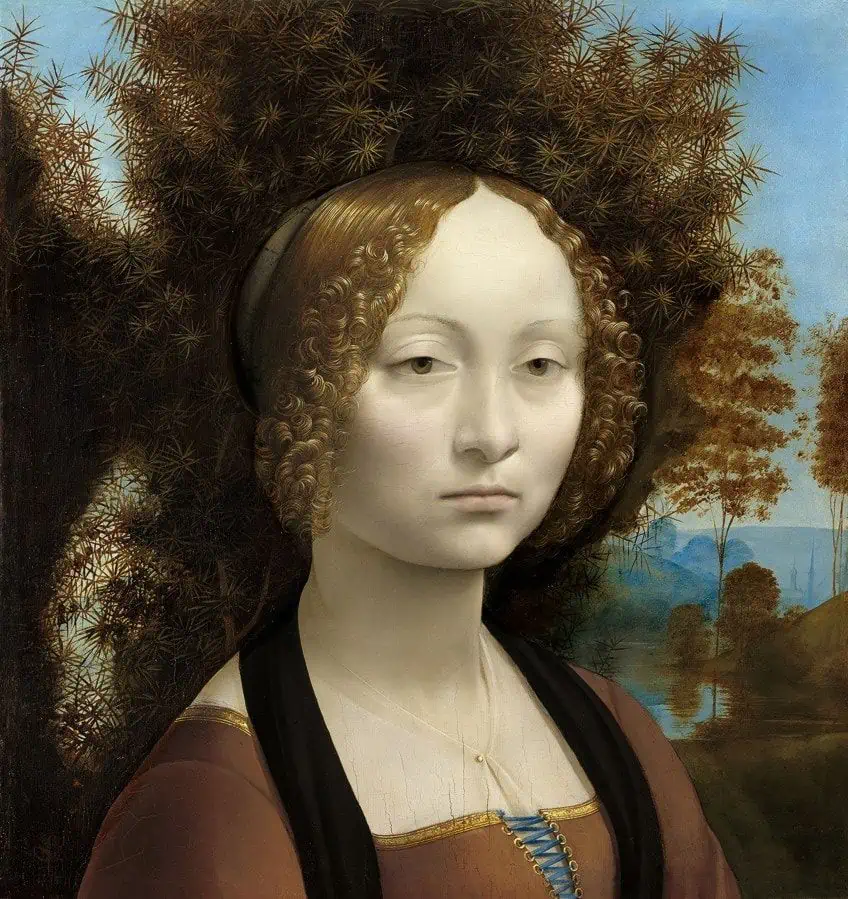 Ginevra de’ Benci (c. 1474-1478) by Leonardo da Vinci; Leonardo da Vinci, Public domain, via Wikimedia Commons
Ginevra de’ Benci (c. 1474-1478) by Leonardo da Vinci; Leonardo da Vinci, Public domain, via Wikimedia Commons
Many art historians have considered the cangiante, chiaroscuro, unione, and sfumato techniques as being the four methods, used by Renaissance artists, for painting colors. Although it was Leonardo da Vinci that perfected the sfumato technique, other artists like Roger van der Weyden (1399 – 1464) and Jan van Eyck (1390 – 1441), also contributed to playing a part in this technique’s development. Other artists like Raphael, Correggio, Giorgione, and Fra Bartolommeo also practice this method in their paintings.
A Few Sfumato Examples
In our article so far, we have uncovered the sfumato definition and had a look at what is sfumato, and developed a better grasp of the sfumato technique. Now let us delve further into discovering some sfumato examples from famous artists that made use of this unique painting technique.
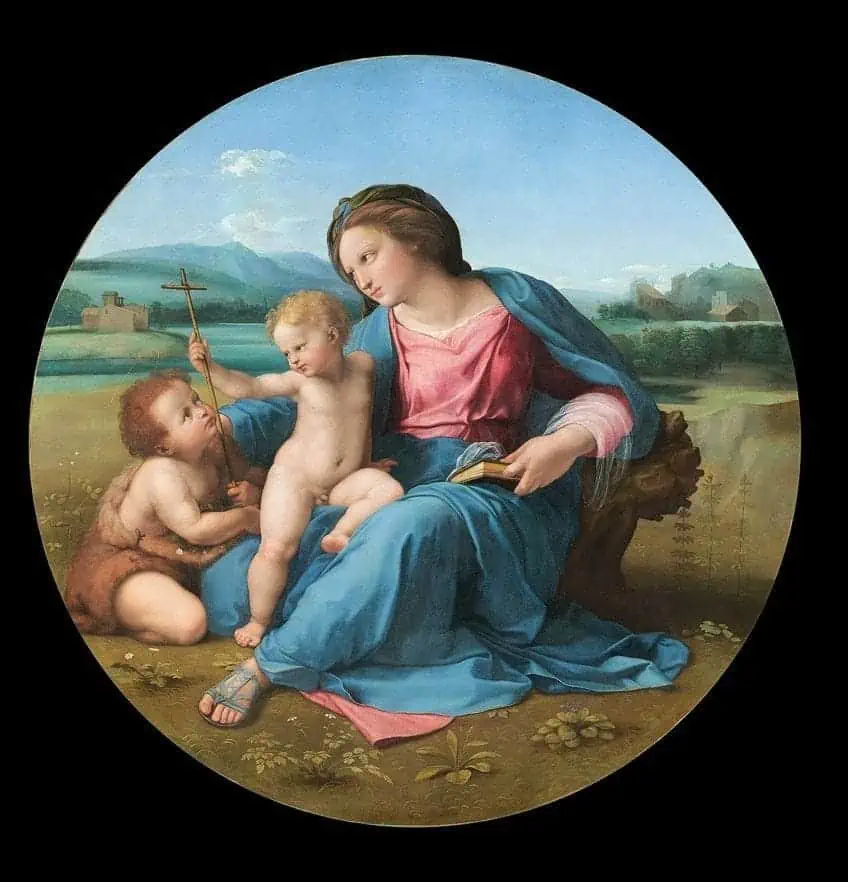 The Alba Madonna (c. 1510) by Raphael; Raphael, Public domain, via Wikimedia Commons
The Alba Madonna (c. 1510) by Raphael; Raphael, Public domain, via Wikimedia Commons
Leonardo da Vinci
| Artist | Leonardo da Vinci |
| Title | Virgin of the Rocks |
| Date completed | 1483 – 1486 |
| Medium | Oil painting |
| Dimensions (cm) | 199 x 122 |
| Gallery | Louvre Museum, Paris, France |
| Place of origin | The church of San Francesco Maggiore in Milan |
Let us begin with the renowned artist, Leonardo da Vinci. He used this technique in many of his paintings to create various deceptions that were almost dreamy, and beyond the plane of focus. The first artwork that he painted using the sfumato technique was the Virgin of the Rocks (1483 – 1486), which was specially designed for the chapel in San Francesco Grande, Italy. The painting displays the Virgin Mary embracing John the Baptist as a child while stretching out her left hand to bless the Christ child.
The whole scene conveys the feeling of intimacy as the four individuals engage in expressions and gestures of “sacra conversazione” (this is an altarpiece, in which there are attendant saints gathered in a single space around the main theme of Mary and the Child).
Here the artist masterfully combines the techniques of chiaroscuro and sfumato, creating three-dimensional natural figures infused with life, subtly blending the outlines. These techniques give mystery and depth to the misty white landscape in the distance and the shadowy grotto seen in the background. The Virgin of the Rocks was a masterpiece that made Leonardo da Vinci famous and is used by many artists worldwide, who try to adopt this painting technique.
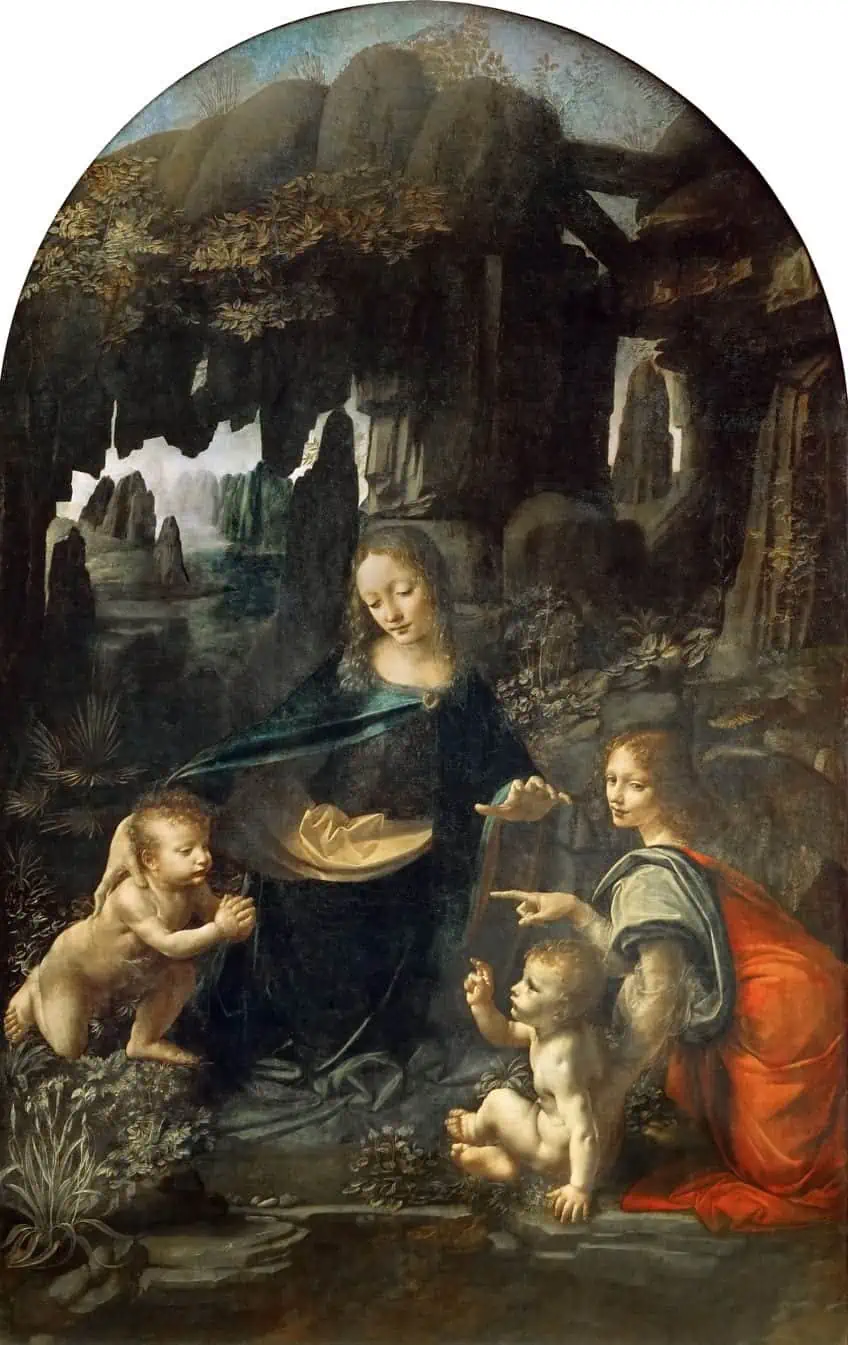 Virgin of the Rocks (c. 1491-1508) by Leonardo da Vinci; Leonardo da Vinci, Public domain, via Wikimedia Commons
Virgin of the Rocks (c. 1491-1508) by Leonardo da Vinci; Leonardo da Vinci, Public domain, via Wikimedia Commons
Another artwork painted by Leonardo da Vinci using the sfumato technique was his very famous painting the Mona Lisa (1503 -1506). The effect of the technique can be seen in the facial expression of the woman and her smile, which shows the gentle shading that is typical of the sfumato technique. When you take a closer look, you will soon notice the soft transition between dark and light tones, as well as the lack of hard edges.
This results in a very smooth texture and appearance, the exact opposite of the use of broken colors, which leave features with a thick texture and very rough edges.
Rembrandt van Rijn
| Artist | Rembrandt van Rijn |
| Title | Man in Oriental Costume |
| Date completed | 1632 |
| Medium | Oil paint on canvas |
| Dimensions (cm) | 153 x 111 |
| Gallery | Metropolitan Museum of Art, New York City, United States |
| Place of origin | Amsterdam |
Rembrandt van Rijn also made use of the sfumato technique in his paintings. One such famous painting is the Man in Oriental Costume (1632). This painting shows a stately figure dressed as a monarch or ruler in his golden robe, silk-style turban, and scarf, studded with jewels. The painting gives an air of grandeur as the man calmly stands and faces forward, with the background empty behind him.
At the top of the painting, the darkness takes on a very subtle radiance, almost golden, around his head.
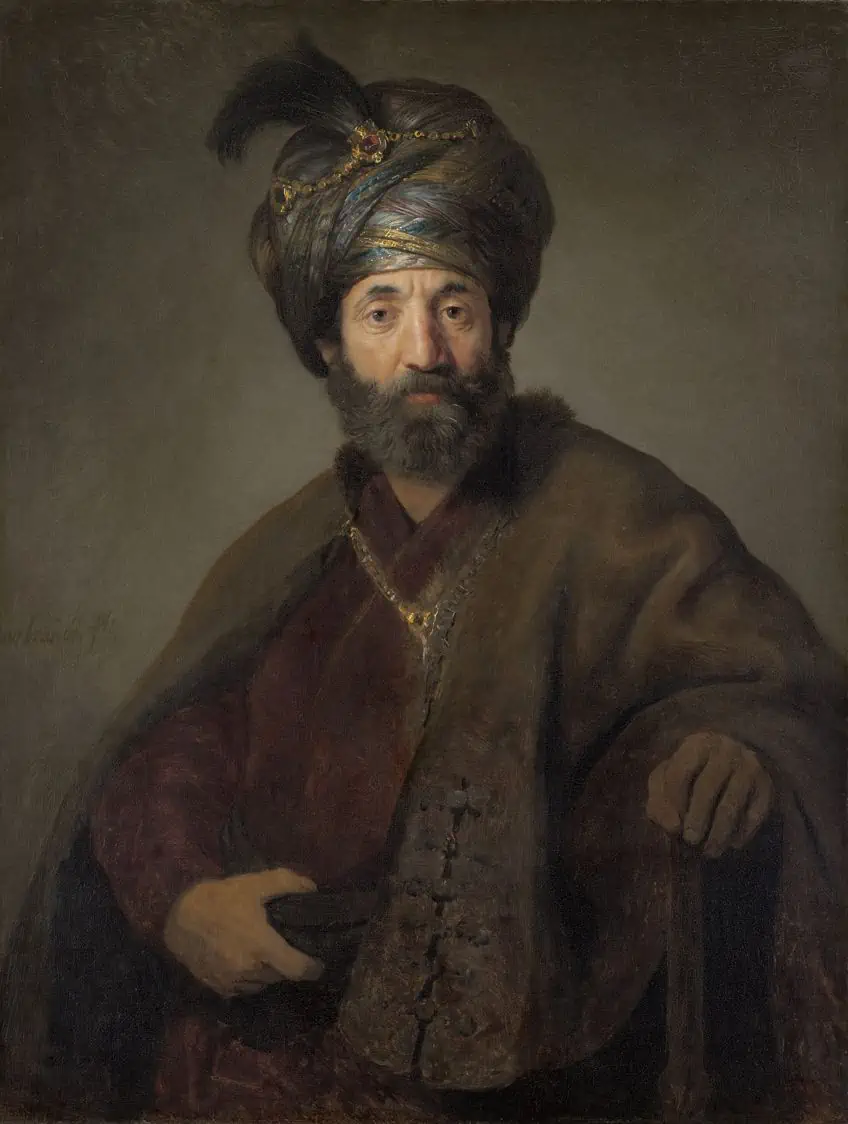 Man in Oriental Costume (1632) by Rembrandt; Rembrandt and workshop, Public domain, via Wikimedia Commons
Man in Oriental Costume (1632) by Rembrandt; Rembrandt and workshop, Public domain, via Wikimedia Commons
Rembrandt used a very limited palette when painting this portrait and shows his own style of chiaroscuro and sfumato, by emphasizing the golden light that radiates through the profound darkness. He always developed an awareness of psychological complexity when painting his portraits that seemed to captivate the viewers. This painting is also recognized as The Noble Slav and was painted after his move to Amsterdam.
Johannes Vermeer
| Artist | Johannes Vermeer |
| Title | Girl with the Pearl Earring |
| Date completed | 1665 |
| Medium | Oil paint on canvas |
| Dimensions (cm) | 44 x 39 |
| Gallery | Mauritshuis Museum, the Hague, Netherlands |
| Place of origin | Holland |
The famous portrait by Johannes Vermeer known as the Girl with the Pearl Earring (1665) shows a woman against a very dark background looking intently at her viewers, with her eyes shining and her lips open, almost as if she is about to say something. Her dress seems soft with contrasting highlights and shadows of color, with the pearl dangling from her ear catching the light.
This work of art by Vermeer gives him the reputation of being the master of light, because of the way he mastered the technique of chiaroscuro and sfumato.
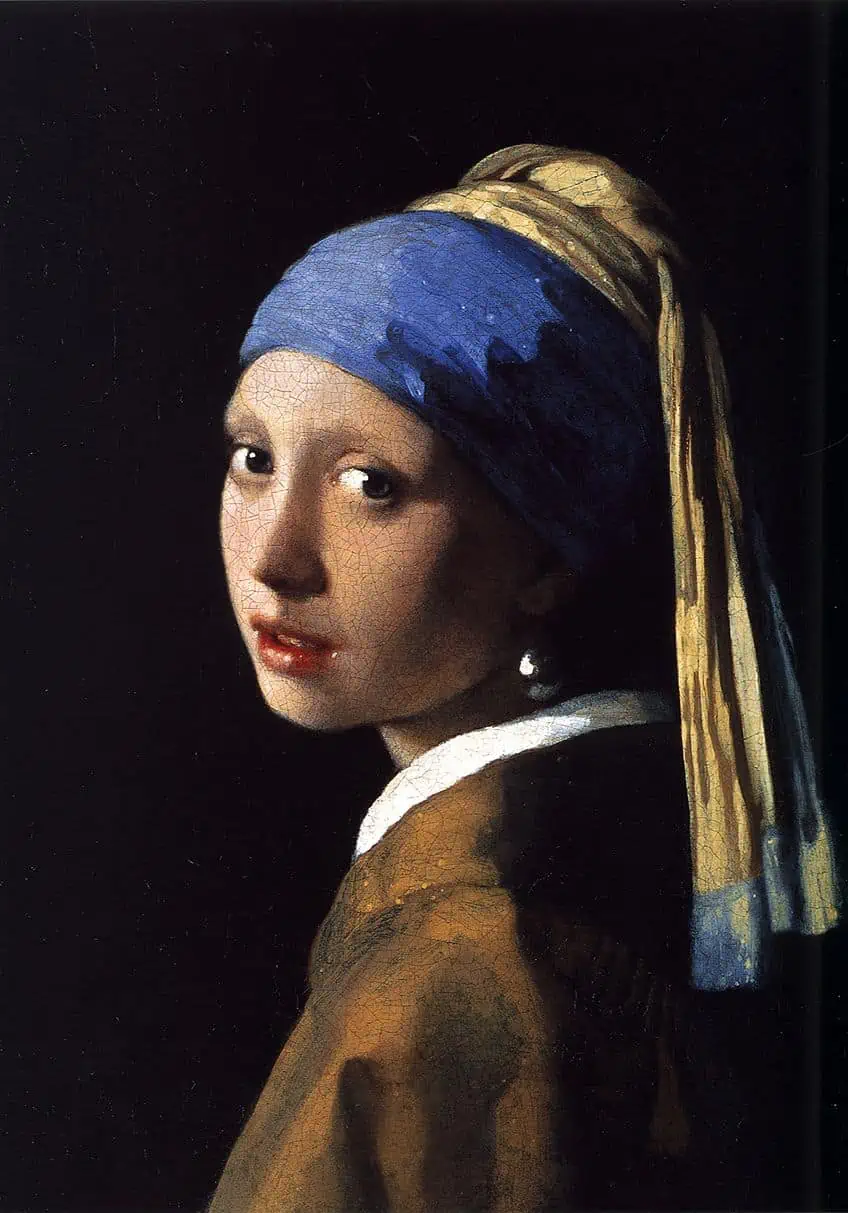 Girl with a Pearl Earring (c. 1665) by Johannes Vermeer; Johannes Vermeer, Public domain, via Wikimedia Commons
Girl with a Pearl Earring (c. 1665) by Johannes Vermeer; Johannes Vermeer, Public domain, via Wikimedia Commons
He makes use of thin almost translucent paint and applies it with a fine badger-hair brush. This is to give subtle shifts in the skin tone, the white and pink highlights on her lips, and the bright gaze of her eyes. The turban and dress focus attention on the face with great clarity and feeling. This painting is not a portrait but a tronie, which means it’s a painting that shows a characteristic or exaggeration of a facial expression.
This was popular at that time and has still fascinated historians, scholars, and the public at large even into the 21st century.
Francisco Goya
| Artist | Francisco Goya |
| Title | The Third of May 1808 |
| Date completed | 1814 |
| Medium | Oil paint on canvas |
| Dimensions (cm) | 268 x 347 |
| Gallery | Museo Nacional del Prado, Madrid, Spain |
| Place of origin | Madrid |
This famous painting by Francisco Goya known as The Third of May 1808 (1814), shows some unarmed Spaniards that are about to be executed by Napoleon’s troop’s firing squad. In the center is a man standing with arms raised amidst many bodies already killed around him. The whole scene is painted with a gritty and dark palette, with the only bright colors being the young man’s yellow pants and white shirt, with a lightbox on the ground giving the soldiers some light to see what they were doing. This use of light and dark by the artist reveals the sfumato technique effect, which was intended not only to attract the viewer’s attention, but also has a symbolic and political meaning.
This art piece by Goya has been an inspiration and influence for many artists, which include Pablo Picasso and Édouard Manet. Not only because of his technical painting skills but also for depicting the horror and terror of the political war of those times.
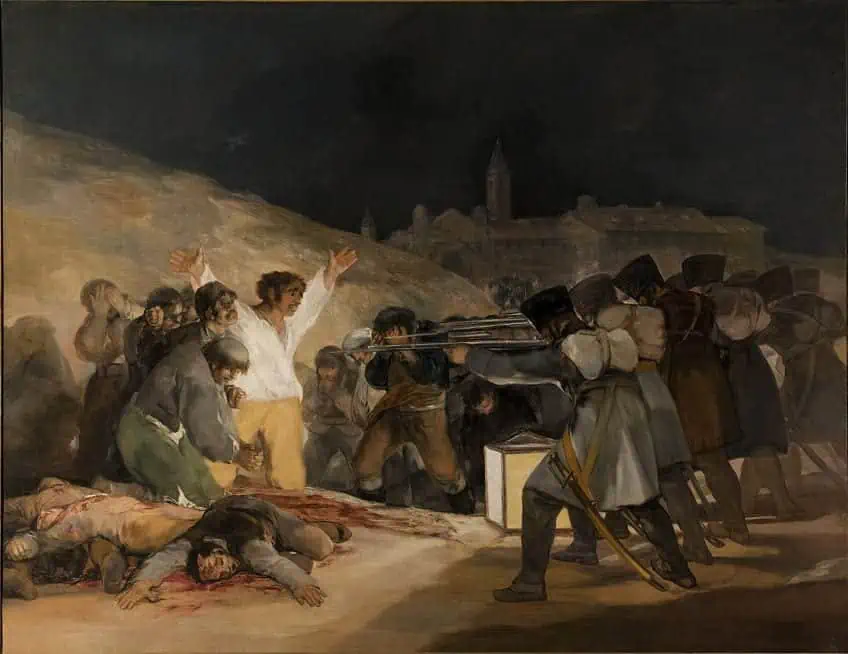 The Third of May 1808 (1814) by Francisco Goya; Francisco de Goya, Public domain, via Wikimedia Commons
The Third of May 1808 (1814) by Francisco Goya; Francisco de Goya, Public domain, via Wikimedia Commons
Is the Sfumato Technique Still Practiced Today?
The sfumato technique seems to be a little outdated if we compare the contemporary colorful art that is seen today. However, many modern artists take inspiration from the old masters in creating their own sfumato art styles in their artworks. In the 20th century, filmmakers and photographers are making use of the effects that the sfumato technique provides. Some modern photographers like Edward Weston, W. Eugene, and Ansel Adams have often used this technique to give the contrast between light and shadow, while others use the light contrast to create the sfumato effect for their portraits.
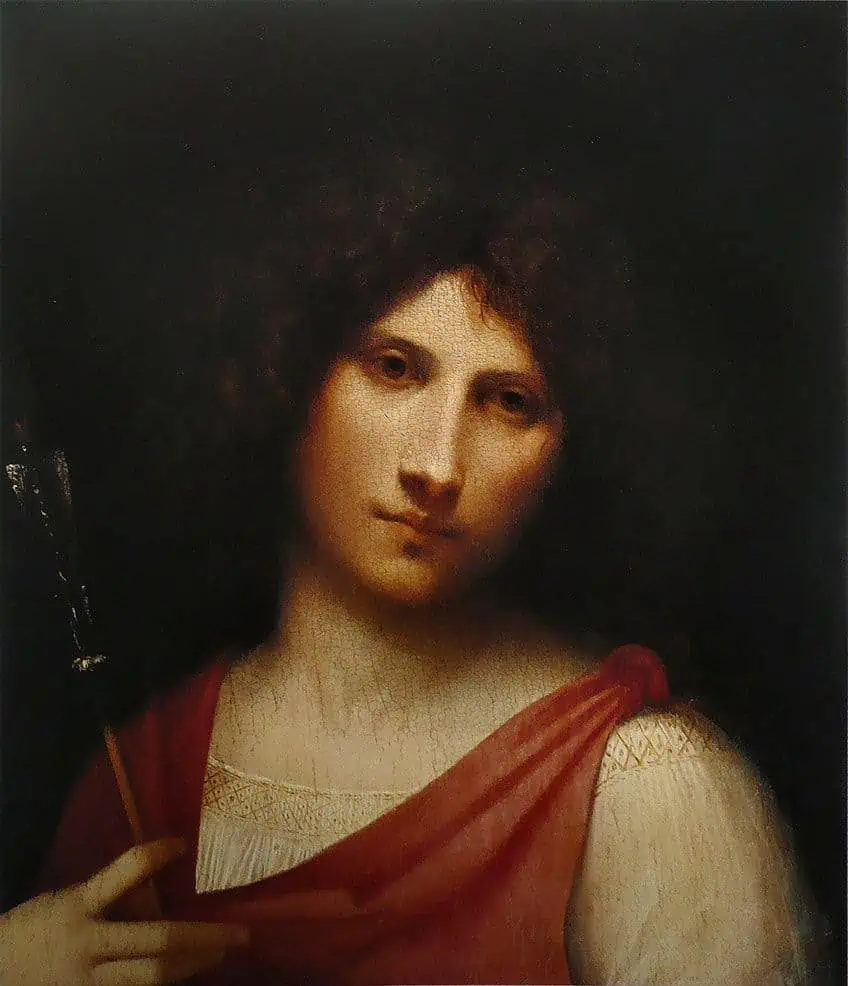 Youth Holding an Arrow (1505) by Giorgione; Giorgione, Public domain, via Wikimedia Commons
Youth Holding an Arrow (1505) by Giorgione; Giorgione, Public domain, via Wikimedia Commons
In the film-making industry, Gregg Toland used this technique when filming The Life and Death of 9413 (1928), using shadows to define the foreground from the background. This made him the most sought-after cameraman in the industry. Other filmmakers that used this technique include William Dieterle, Sven Nykvist, and Andre Tarkovsky.
So, if you are considering trying this technique for yourself but feel you are not able to achieve the results, simply make use of this technique to shift or move from one color to another that has a similar value. You can also use this technique to create a different atmosphere in your background. Sfumato is considered to be mainly an oil painting technique, but nothing is stopping you from using other mediums!
Frequently Asked Questions
What Is Sfumato Art?
Sfumato is a technique that lacks harsh and sharp contours and can be used to create a hazy look by mixing and blurring, where light and dark can blend into each other. You can achieve this result by using a dry brush or blurring the backstrokes with a cloth or your fingertip.
What Painting Is an Excellent Example of the Sfumato Technique?
The Mona Lisa (1503 – 1506), painted by Leonardo da Vinci, is the most famous painting using the sfumato technique. It is especially evident in the subject’s facial area, where you can see the change or shift between light and dark tones. There is a total lack of sharp edges, leaving a smooth finish.
When Did the Sfumato Technique Originate?
The sfumato technique originated in the Renaissance period and was first discovered in a small Flemish school in the 14th century. However, it was the famous painter Leonardo da Vinci who perfected the technique.
In 2005, Charlene completed her wellness degrees in therapeutic aromatherapy and reflexology at the International School of Reflexology and Meridian Therapy. She worked for a company offering corporate wellness programs for several years before opening her own therapy practice. In 2015, she was asked by a digital marketer friend to join her company as a content creator, and it was here that she discovered her enthusiasm for writing. Since entering the world of content creation, she has gained a lot of experience over the years writing about various topics such as beauty, health, wellness, travel, crafting, and much more. Due to various circumstances, she had to give up her therapy practice and now works as a freelance writer. Since she is a very creative person and as a balance to writing likes to be active in various areas of art and crafts, the activity at acrylgiessen.com is perfect for her to contribute their knowledge and experience in various creative topics.
Learn more about Charlene Lewis and about us.
